Garden Delight Miniature Nectarine Tree
Description
About the Garden Delight Miniature Nectarine Tree
Grow an abundance of fresh fruit on one of our smallest trees!
The Garden Delight Miniature Nectarine tree is a genetic dwarf developed by Floyd Zaiger in Modesto California, circa 1975. Designed to be compact yet fruitful, the Garden Delight is an excellent choice for small spaces and patios. It’s a heavy-bearing tree that only reaches 5-6 ft. In height.
Garden Delight is a show-stopping patio and landscape accent. With dense foliage and a beautiful spring display of dark pink, double blossoms that cover the branches. This dwarf tree is a cross between Red Grand Nectarine and a seedling of Flory dwarf peach. The result is large, juicy, sweet, freestone nectarines that ripen in mid-to-late August. The yellow-fleshed nectarines have an orange-like flavor. Great for cooking, baking and preserves.
How to Grow Garden Delight Nectarines
Garden Delight Nectarine trees thrive in warm climates. This compact fruit tree can easily be covered and protected from frost. Cooler regions can bring their container nectarine in for the winter – keeping in mind that this tree requires about 500 hours or so of winter chill hours. The natural spreading habit and non-vigorous growth make this tree easy to maintain.
Garden Delight is a self-pollinating fruit tree that prefers full sun and well-draining soil. It’s very dependable and considerably easy to grow!
Survival Guaranteed!


Since 1816, Stark Bro’s has promised to provide customers with the very best fruit trees and plants. It’s just that simple. If your trees or plants do not survive, please let us know within one year of delivery. We will send you a free one-time replacement, with a nominal shipping fee of $9.99. If the item in question is not available, we can issue a one-time credit to your account equaling the original product purchase price or issue you a refund. Read more about our warranty policy.
Characteristics
| Bloom Color | Pink |
| Bloom Time | Early |
| Chill Hours | 500 |
| Fruit Color | Yellow |
| Fruit Size | Medium - Large |
| Hardiness Zone Range | 6 - 9 |
| Pollination | Self-Pollinating |
| Ripens/Harvest | August |
| Shade/Sun | Full Sun |
| Soil Composition | Loamy |
| Soil Moisture | Well Drained |
| Soil pH Level | 6.0 - 7.0 |
| Taste | Sweet |
| Texture | Juicy, Firm |
| Years to Bear | 2 - 4 |
Size & Spacing
Mature Size
Recommended Spacing
Zone Compatibility
Pollination
This variety is self pollinating.
Tools & Supplies
Planting & Care
Learn all about how to grow nectarine trees in The Growing Guide. An entire section of our website dedicated to your growing success.
Shipping Information
Estimated Delivery Date
Arrives when it's time to plant
Questions & Answers
A pot with 20-24 inches diameter is ideal for growing nectarines in pots.
I’ve had mine planted outside for three years in 6B/7A and it’s been just fine with a heavy mulch through the winter months. Even the serious cold snaps and snows of this past winter haven’t hurt this spring’s beautiful blooms.
Hi Drew, I only got it a year ago. When it got cold it actually shed all it's leaves so I never touched it. It leafed out but no blooms. Should be interesting in what it does this winter. I do have it in a pot and kept it indoors during the winter. Most citrus don't require pruning unless they are huge tree's and they start blocking pathways and such. Hope this helps. Gail
Since its out of stock, we do not have the size in which we would offer. Once the item becomes available that information will be available at the top of page under "choose an option In general dwarf will be 8*10 ft tall and wide and the semi dwarf will be 12-15 feet tall and wide.
Great question! The Garden Delight Miniature Nectarine Tree requires about 500 chill hours to ensure proper bud development and fruit production. Chill hours are generally the number of hours the tree is exposed to temperatures between 32°F and 45°F during the winter. These cooler temperatures trigger the tree's dormancy and allow it to rest before resuming growth in spring.
Here's how the chill hours work and how it applies to your zone:
Zone 6 (like your location): Your area will typically provide more than enough chill hours since you experience plenty of winter days with temperatures within the 32°F to 45°F range.
Indoors during extreme cold: If temperatures drop below 20°F consistently, the tree can experience damage. Therefore, the recommendation to bring the tree indoors during extreme cold is to prevent freezing, not to prevent chill hours. The tree will still accumulate enough chill hours if it's left outside for most of the winter and only brought in during extreme cold snaps (when temps dip below 20°F).
Balanced approach: You can leave the nectarine tree outside to accumulate chill hours naturally. When the temperature dips too low (below 20°F), move it into an unheated garage or a protected area where it will still be cold but not freezing.
By balancing outdoor exposure with protection during extreme cold, your nectarine tree should receive sufficient chill hours while being safeguarded from damaging temperatures.
Yes those typically are called water sprouts or suckers and should be removed.
Short answer is: yes. You can espalier practically any fruit tree, including this tree. The dwarf size is the easiest to espalier. Our detailed article can be found here: //www.starkbros.com/growing-guide/article/espalier-fruit-treesOur detailed article can be found here: //www.starkbros.com/growing-guide/article/espalier-fruit-trees
When shipped it will be 2 years of age.
If your Temps drop below 50 degrees it will need to be moved indoors in the winter months.
You can grow almost anything in a container! This excellent article will answer your questions and provide good advice. Please see "Growing Fruit Trees in Containers" //www.starkbros.com/growing-guide/article/fruit-trees-in-containers-pt1







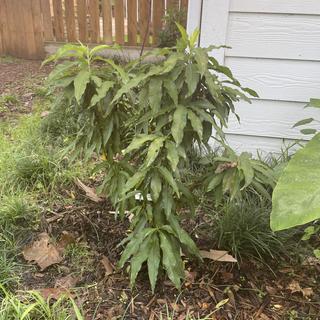
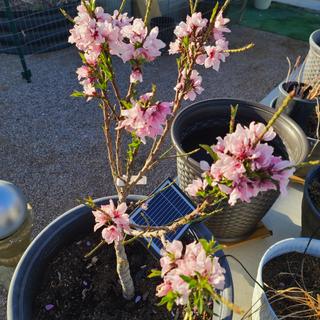
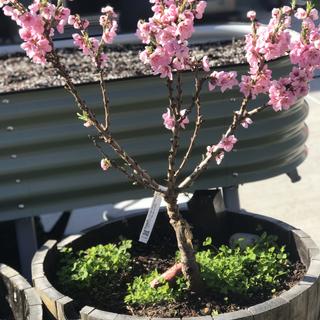
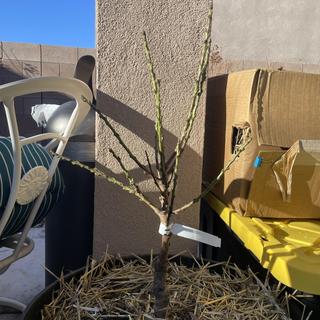
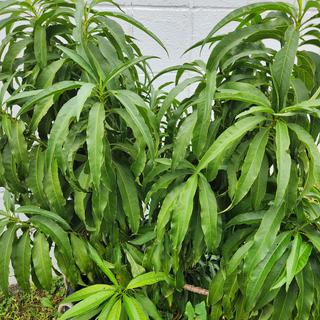
I wanted to try a miniature fruit tree.
I wanted a variety of fruit tree for a small garden.
I wanted to improve the taste, texture of a peach tree that grew from store bought peach pits.
I wanted a small fruiting tree I could easily grow in a pot